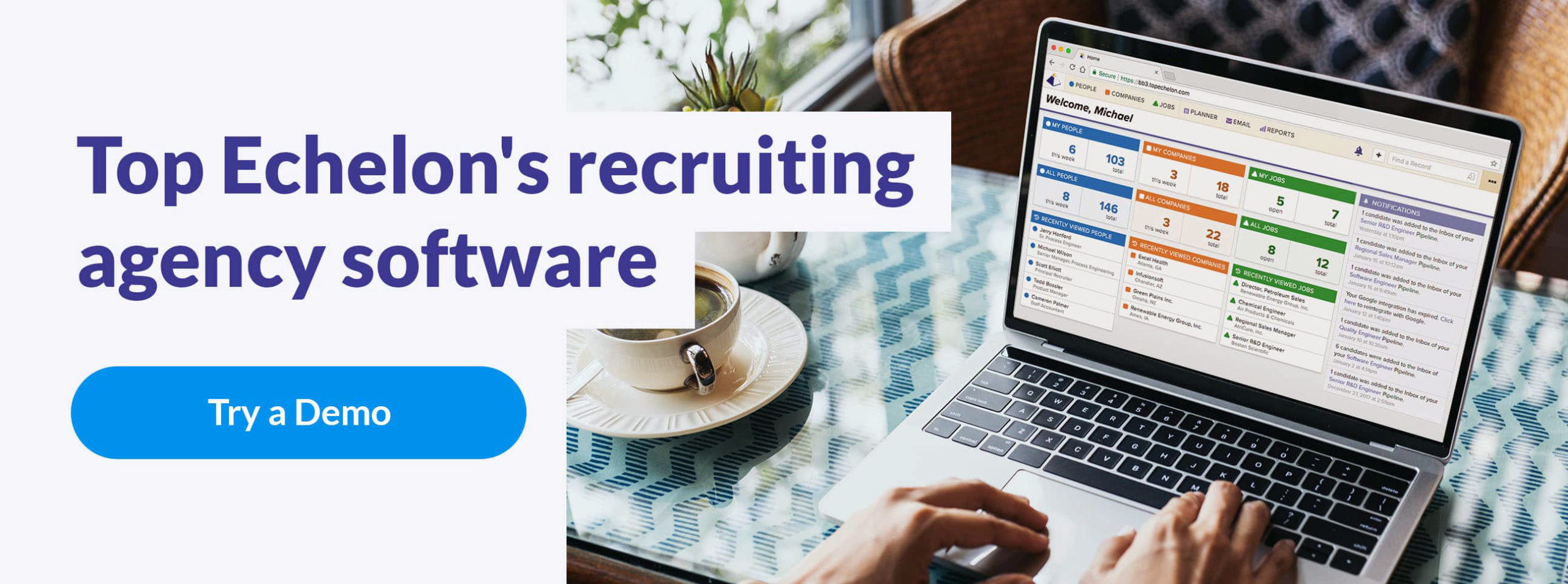How does an ATS work? In our previous blog post, we discussed exactly what ATS software is, and we also addressed the differences between a web-based application and one that resides on the hard drive of your computer.
In addition, we listed some of the advantages of a web-based applicant tracking system and why the majority of recruiters choosing applications in the industry these days are opting for that type of system. (In actuality, almost all of the applicant tracking systems currently on the market are of the web-based variety, and there’s a good chance that all of them will fall into that category in the near future.)
5 applicant tracking system benefits
Since we’ve already addressed the advantages of applicant tracking system features, let’s now discuss the benefits that are tied to those advantages. What can you as a recruiting firm owner hope to gain from using such an application?
Below are five benefits of an applicant tracking system:
#1—Enhanced data entry
With a web-based application, there are numerous ways you can add data more easily. Not only do they include a resume parser, but you can also use an email parser, which allows you to email a batch of resumes to a designated email address so they’re parsed into your recruiting database automatically. You don’t want to waste time adding data. You want to waste time making placements and cashing checks!
#2—Social media integration
Making more placements means getting your jobs in front of the right candidates, and those candidates all have social media accounts. This is especially helpful when attempting to find and identify passive candidates. They’re not cruising the top job posting sites and applying for positions, but they ARE checking their LinkedIn, Facebook, and Twitter accounts on a consistent basis.
#3—Posting your jobs online
Let’s take this one step further, shall we? How are you going to get your jobs in front of quality candidates via social media (and other places on the Internet)? By sending them a link to a great employment opportunity—a link that brings them back to your firm’s website, where they can be tantalized by the job description and enticed to submit their candidacy. Smell that? That’s a placement check. Make sure your recruitment website design facilitates mobile traffic.
#4—Mobile recruiting
Let’s face it: many candidates, especially those who are part of the Millennial Generation, own a smartphone. Not only that, but those candidates—especially those who are conducting a covert, passive search and don’t want to search for jobs at their current employer—use their mobile device to look for new opportunities. They also look for jobs on their mobile device while binge-watching their favorite television show on Netflix . . . because convenience.
#5—Remote recruiters and researchers
When you leverage the benefits of an applicant tracking system based on the web, your recruiters and researchers don’t even have to be in the same room. You can have access to and share the same information, all of which will be updated in real time with no lags. This gives you a tremendous amount of flexibility in terms of personnel, reporting, and office accountability.
How could a web-based applicant tracking system help to streamline the recruiting process for you and the other recruiters in your firm? How could it help you make more placements and generate more revenue?
Explore the possibilities and realize the potential that a web-based recruiting software offers.









